
Having a spacious office in Singapore is a rare advantage—but if it’s not planned properly, a large open space can quickly become overwhelming, noisy, and underutilised. The challenge? Creating defined zones for focused work, meetings, and collaboration without making the space feel closed-off or cluttered.
Having a spacious office in Singapore is a rare advantage—but if it’s not planned properly, a large open space can quickly become overwhelming, noisy, and underutilised. The challenge? Creating defined zones for focused work, meetings, and collaboration without making the space feel closed-off or cluttered.
With the right office renovation approach, you can strike the perfect balance between openness and function. Whether you're starting a commercial office renovation or simply updating your layout, these smart design strategies can help you get the most out of your space while keeping that airy, modern feel.
Large offices can feel disorganised without a clear structure. Without visual or spatial cues, employees may struggle to find focus areas, collaboration spots, or quiet corners.
An experienced office renovation expert knows that zoning is not about building more walls—it’s about using design to guide how people interact with the space. Smart zoning leads to:
Let’s explore how to achieve this with thoughtful design.
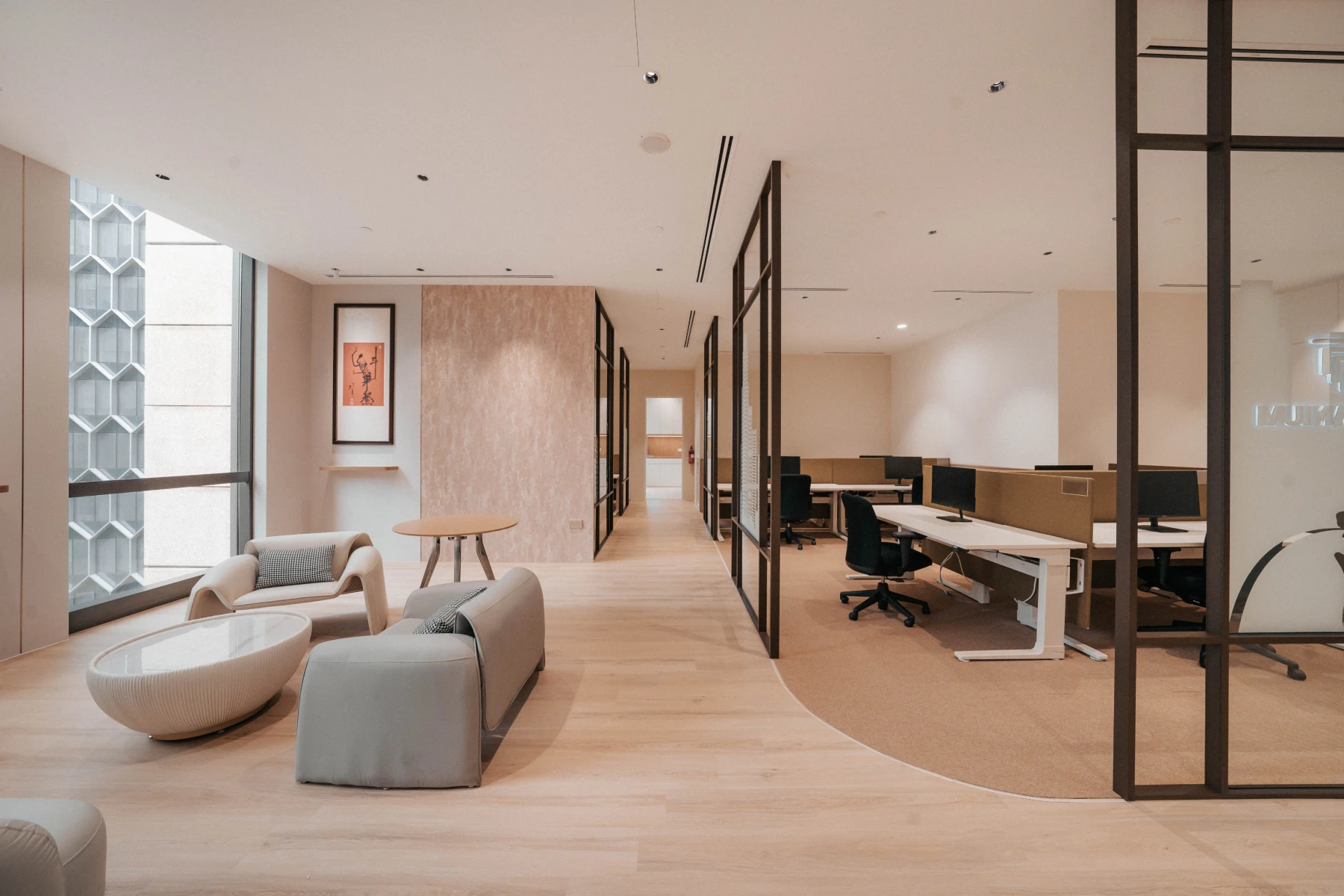
Walls can break up space, but they also block light and flow. To maintain an open layout, use subtle visual cues like:
These non-intrusive dividers help employees intuitively understand the purpose of each area without physically closing off the space.
Glass partitions are a popular feature in many Singapore office renovations because they preserve openness while creating usable, quiet spaces. Frosted panels can offer privacy for meeting rooms or management offices while still allowing light to pass through.
Other smart options include:
If you're working with a professional office interior design company, they’ll help you balance privacy and transparency for each zone.
Not every zone needs a single, fixed purpose. With the right furniture and layout, you can create flexible spaces that adapt to changing needs:
Office interior renovation isn’t just about aesthetics—it’s about designing with adaptability in mind.
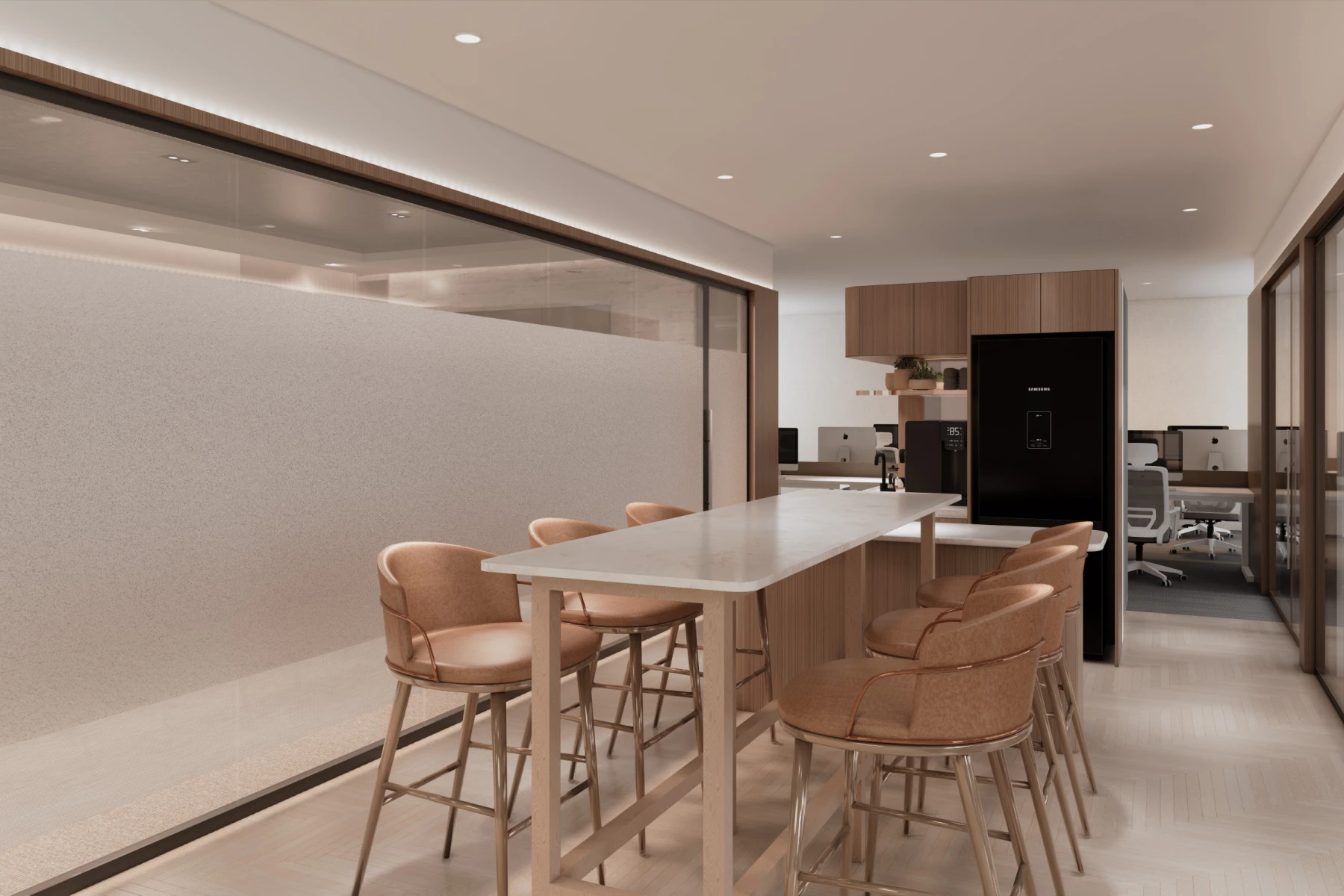
Even in large offices, quiet zones are essential for deep work. Carve out corners or use acoustic booths for solo focus work, phone calls, or one-on-one meetings.
Work with an office renovation company that understands acoustics—because visual openness shouldn't come at the cost of noise control.
Don’t forget the in-between spaces. Walkways, entry points, and connections between zones should be wide, intuitive, and unobstructed. This improves flow and avoids traffic bottlenecks, especially during busy periods.
An experienced office renovation company Singapore businesses rely on will design layouts that naturally guide movement while keeping zones visually distinct.
Lighting has a powerful effect on how we experience a space. Brighter, task-focused lighting works well in work zones, while warmer, softer lighting can mark out informal areas like lounges or pantry spaces.
Layered lighting helps separate zones without building walls—another great tool for preserving the open feel.
If you’re planning a commercial office renovation or simply refreshing your space, the right design decisions can turn a large open floor into a high-performing, visually seamless environment.
We specialise in office space renovation and understand the balance between functionality and aesthetics. Whether you need to separate departments, create meeting zones, or improve focus areas, our team provides tailored office interior design service Singapore companies trust.
Contact us today for a free consultation to discuss your dream space!
Explore our extensive portfolio of office projects to inspire your next renovation.
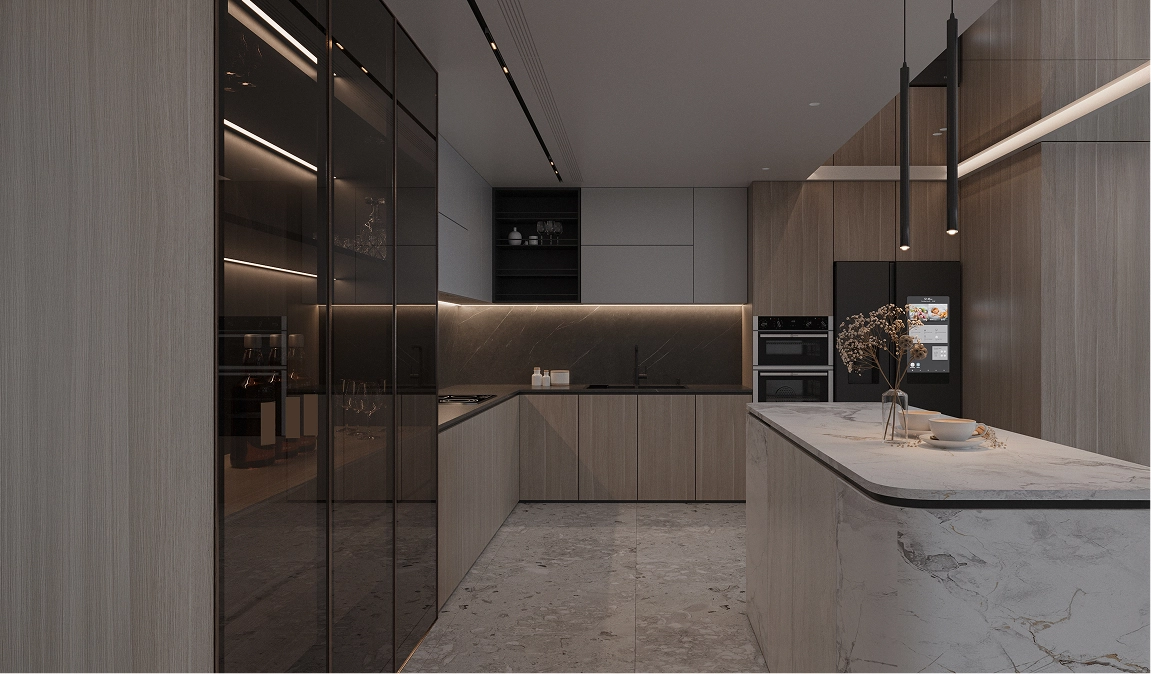
In the magnificent expanse of a spacious landed home, the kitchen transcends its traditional role as merely a functional cooking area. It truly blossoms into a central, vibrant hub for sophisticated entertaining, intimate family dining, and the very core of daily family life. If you're contemplating a transformative landed house renovation or embarking on an ambitious landed property rebuild, upgrading this pivotal space—the kitchen—offers one of the most profoundly rewarding returns, not only in terms of enhanced functionality and seamless flow but also in the sheer infusion of luxury and enduring value it brings to your entire residence.
This comprehensive guide presents a curated selection of refined, high-end kitchen renovation ideas, meticulously tailored for the unique scale and lifestyle offered by large homes in Singapore. These concepts are designed to strike an impeccable balance between breathtaking beauty, uncompromising practicality, and a timeless design aesthetic that will serve your family for generations.
The generous square footage inherent to a landed home allows the kitchen to assume a far more expansive and integrated role in daily living than in more compact residences. No longer confined to a separate, utilitarian room, the contemporary kitchen in a landed property is often envisioned as a fluid extension of the broader living experience. It connects seamlessly to elegant dining areas, opens gracefully onto inviting outdoor patios, or becomes an integral part of expansive, open-plan lounges. This dynamic interplay between spaces makes thoughtful landed house interior design absolutely essential, ensuring the creation of a cohesive, elegant, and effortlessly flowing living experience that reflects modern sensibilities and a discerning lifestyle.
Whether you’re working on designing a brand new kitchen layout from the ground up or meticulously refreshing an existing one, these innovative ideas are guaranteed to elevate your kitchen's aesthetic appeal, culinary performance, and overall contribution to the luxurious ambiance of your landed property.

The open kitchen design is a cornerstone of contemporary luxury, inherently adding an unparalleled sense of flow, openness, and interconnectedness, especially within homes boasting larger footprints. Moving away from the more traditional enclosed kitchen concepts, many landed interior design Singapore clients now express a strong preference for fluid layouts that harmoniously blend the kitchen with adjacent living and dining areas. This fosters social interaction and a feeling of expansive grandeur.
Strategies for Maintaining Functionality in Open Kitchens Without Compromising Style:
This open layout is particularly well-suited for homeowners who cherish hosting elaborate gatherings, allowing them to effortlessly cook, serve, and entertain their guests all within one grand, integrated space.
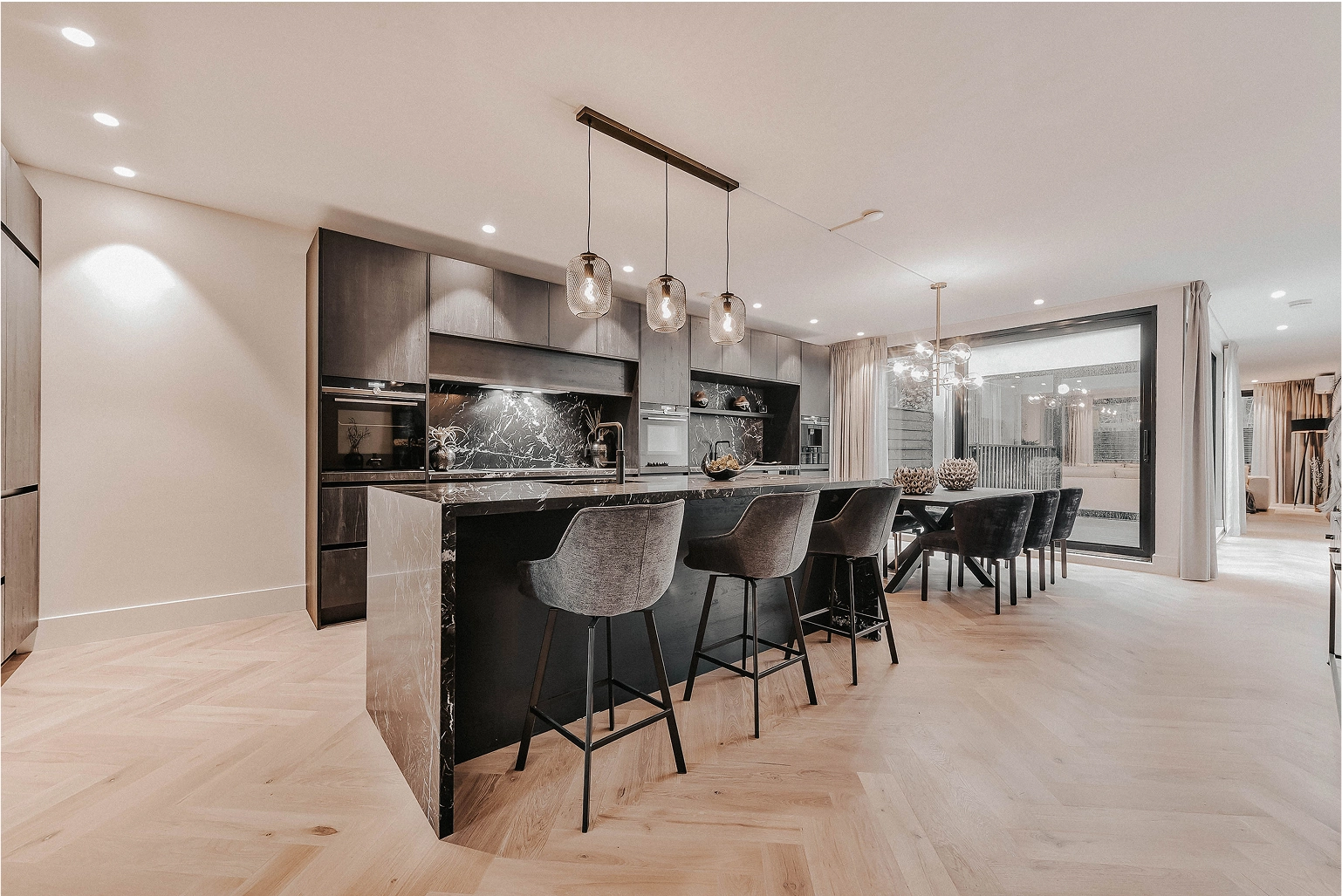
In the generous dimensions of larger homes, the kitchen island transcends its utilitarian function to become the undeniable heart and a natural gathering point of the entire space. It’s an opportunity for a significant design statement. Go beyond conventional shapes and explore island designs that become true architectural features.
Inspiring Statement Island Features:
A beautifully designed, thoughtfully integrated island instantly makes a striking centrepiece, serving as a hallmark of landed house interior design Singapore clients who possess an astute eye for exquisite detail and a desire for both beauty and utility.
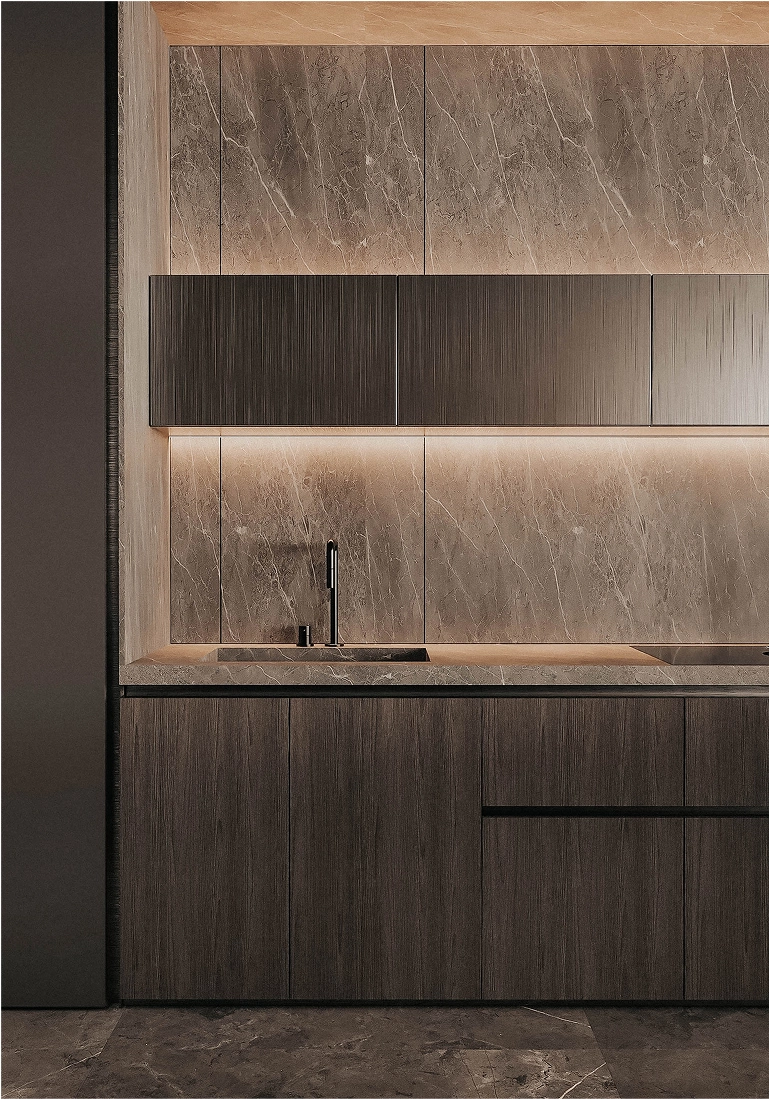
In a truly high-end kitchen, custom cabinetry is not merely an option; it's an absolute imperative. With the expansive space available in a landed home, you have the unparalleled freedom to design every aspect of your cabinetry to your exact culinary needs and aesthetic preferences. This extends from floor-to-ceiling storage solutions to meticulously organised spice drawers, integrated pantry systems, and seamlessly concealed appliances.
For Materials and Finishes that Radiate Luxury:
These bespoke choices help to profoundly elevate the feel of the kitchen, setting a sophisticated tone that resonates throughout the rest of your landed property interior design.

A high-end kitchen in a grand home is fundamentally incomplete without a suite of top-of-the-line appliances that offer both superior performance and cutting-edge smart technology. These are not just tools; they are integral components of a luxurious culinary experience.
Essential Premium Appliances & Smart Tech:
These state-of-the-art upgrades are exceptionally popular in landed house renovation Singapore projects, signifying a long-term investment in unparalleled convenience, energy efficiency, and a truly elevated culinary lifestyle.

Lighting is a transformative force in any interior, and in a larger kitchen, it is paramount to both aesthetic appeal and practical functionality. Good lighting fundamentally changes how a kitchen feels and operates. In expansive layouts, mixing multiple layers of lighting is key to achieving optimal flexibility, ambiance, and task illumination.
Mastering Layered Lighting for a Luxury Kitchen:
This meticulously layered approach not only creates a versatile and luxurious atmosphere but also enhances the visual appeal of your chosen materials and finishes, allowing them to shimmer and shine.
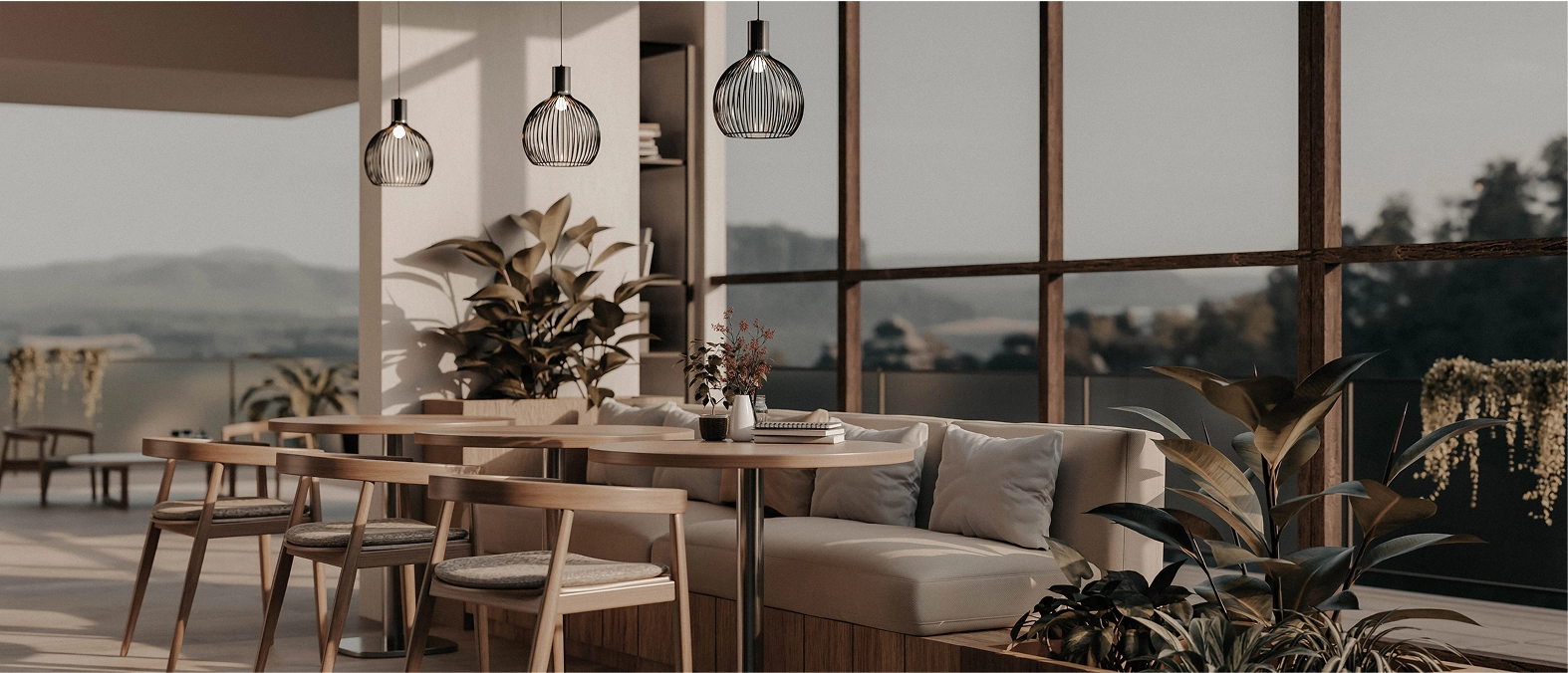
Many landed homes offer ample space to include dedicated eat-in kitchens or seamlessly integrate adjacent dining zones. A truly well-designed kitchen in a large home should flow effortlessly into these spaces, creating a harmonious and interconnected environment for socialising and dining.
Design Ideas for Integrated Dining:
This sophisticated setup reflects how Singapore landed house design is continually evolving, embracing fluid layouts that support and enhance a desirable indoor-outdoor lifestyle, blurring the lines between interior luxury and external tranquility.
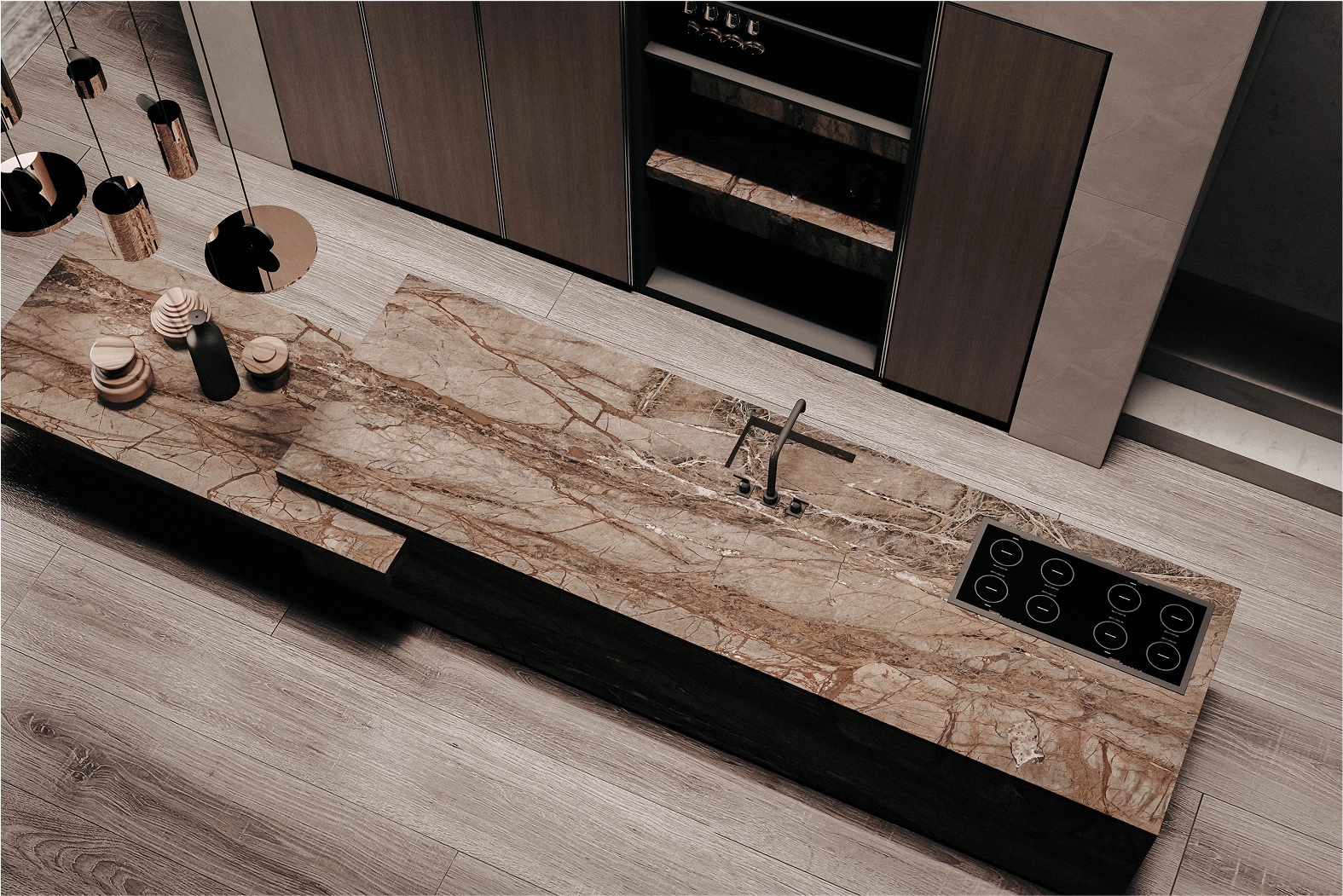
In any high-end renovation, the choice of materials is paramount; it quite literally sets the tone for the entire space. Even inherently functional areas like kitchens should exude elegance, refinement, and a sense of enduring quality. The goal is to select materials that are not only beautiful but also durable and capable of standing the test of time.
Some Timeless and Luxurious Material Combinations:
A strong focus on varied textures, intelligent contrast, and inherent durability ensures your kitchen not only remains aesthetically beautiful but also supremely functional and resilient for many years to come, truly becoming a legacy space within your home.
Kitchen renovations in grand, spacious homes demand far more than mere design know-how; they require meticulous planning, surgical precision, and a profound, holistic understanding of how to seamlessly integrate luxury, cutting-edge technology, and practical liveability. It's a complex undertaking that benefits immensely from expert guidance.
Whether you’re embarking on a monumental landed house rebuild, a full-scale landed property renovation, or simply aiming to refresh and revitalise the heart of your existing home, our dedicated team has a distinguished track record. We have proudly helped numerous discerning clients create kitchens that not only perfectly match their sophisticated lifestyle but also fundamentally elevate their everyday living experience into one of effortless elegance and culinary delight. We understand the nuances of landed interior design Singapore, from structural considerations to the finest bespoke finishes.
Contact us today for a free consultation to discuss your dream space!
Explore our extensive portfolio of landed property projects to inspire your next renovation.
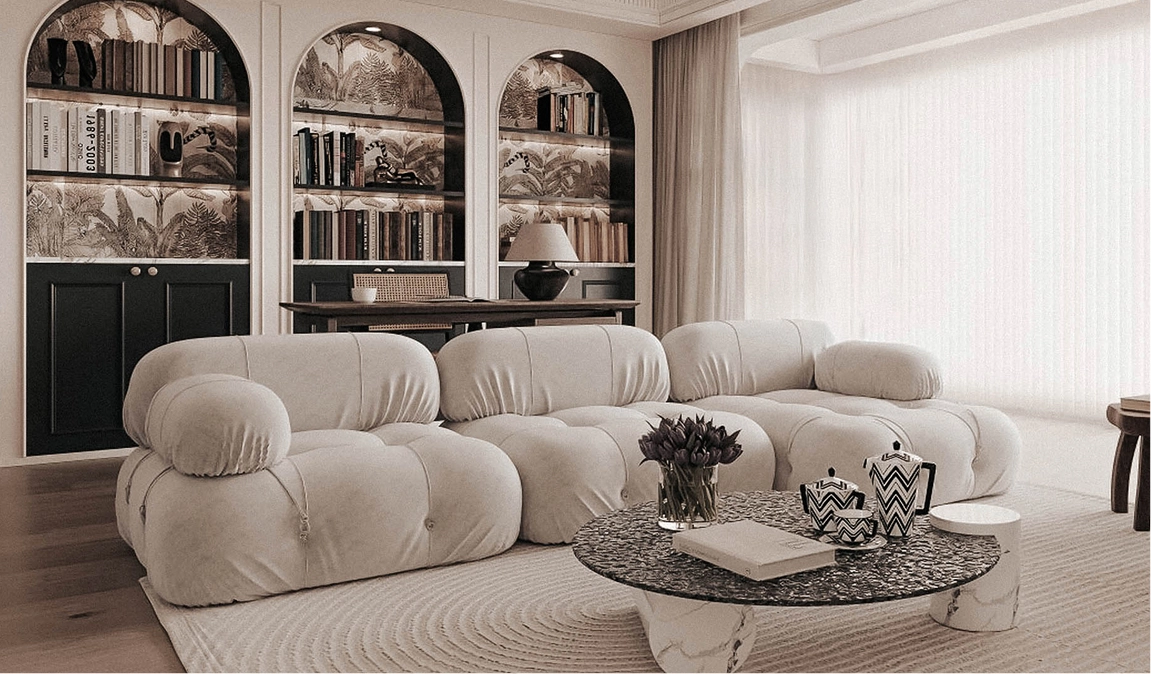
In a vibrant metropolis like Singapore, where every square foot of space is meticulously prized, owning a large home — particularly a landed property — represents a rare and coveted luxury. Yet, even with the undeniable advantage of ample square footage, a home can feel surprisingly dim, uninviting, and even lifeless if not strategically designed to harness the power of natural light. Whether you're embarking on an ambitious landed house renovation, planning a foundational landed property rebuild, or simply aiming to refine your existing interior design, making the absolute most of natural light is not merely a preference; it’s a fundamental key to creating a truly welcoming, uplifting, and energetically vibrant home.
Let's illuminate how thoughtful design choices, meticulous planning, and strategic material selection can profoundly enhance the infiltration and distribution of natural light throughout your magnificent landed property in Singapore—all without compromising on the desired sense of privacy, luxurious style, or ultimate comfort.
The benefits of natural light extend far beyond simply making a space appear bigger and brighter. Ample daylight is a powerful, intrinsic element that directly impacts our physiological and psychological well-being, influencing how we feel and function within our homes. Decades of research have consistently shown that abundant daylight exposure can significantly:
In a larger house, a lack of thoughtful lighting design can result in expansive but underutilised corners, perpetually dark hallways, or gloomy rooms that feel disconnected and unwelcoming. This is precisely where well-planned landed house interior design plays an absolutely crucial role, transforming potential dark spots into luminous, inviting zones.
Leveraging natural light effectively in a large home requires a multi-faceted approach, integrating architectural modifications, clever material choices, and strategic landscaping.

Glass is an unparalleled material when it comes to enhancing light penetration and flow throughout a large home. Its transparency allows light to traverse vast spaces, connecting interiors with the outdoors and diffusing light into deeper areas.
Strategic Glass Applications for Luminous Interiors:

Surfaces within your home play a crucial role in how light is perceived and distributed. Materials that reflect light effectively help to amplify natural illumination, maintaining an airy, expansive, and vibrant atmosphere.
Optimal Material Choices for Light Amplification:
When paired thoughtfully with natural textures (like rattan, linen, or raw wood) to add warmth and depth, this reflective aesthetic feels both timeless and elegantly contemporary—a highly desired look for those seeking a refined landed house interior design Singapore homeowners truly appreciate.
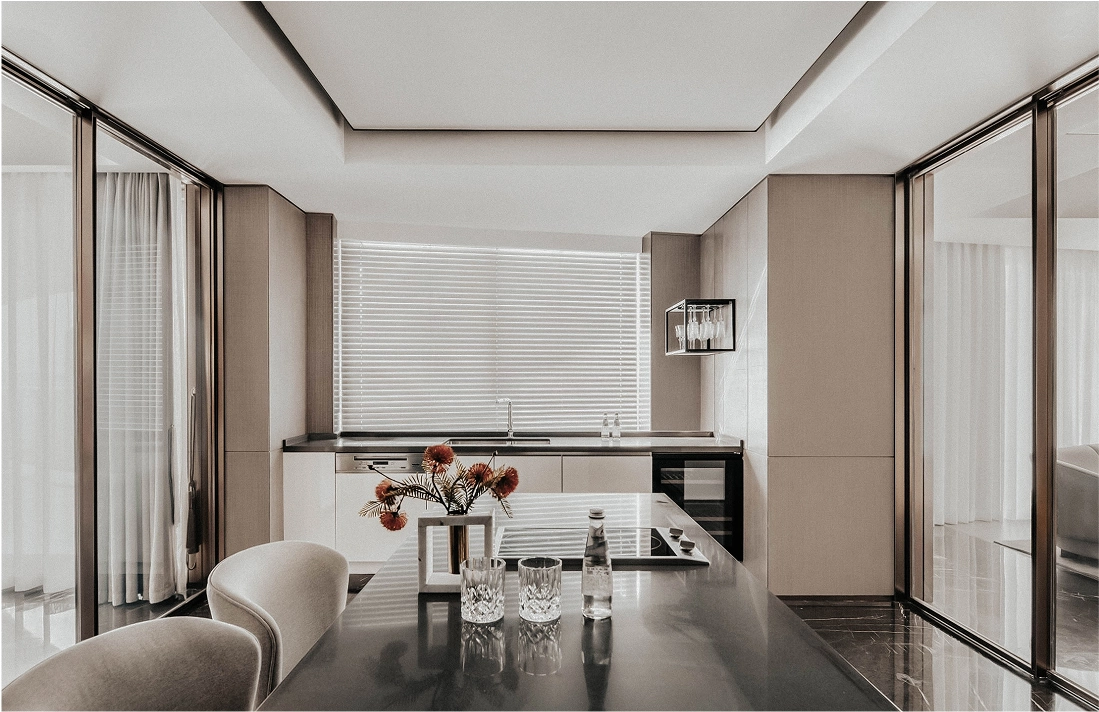
Older landed properties in Singapore often feature traditional, highly compartmentalised layouts, characterised by numerous internal walls that can unfortunately block the natural flow of light and air. During your landed property renovation, collaborating closely with a skilled interior designer is paramount to strategically reconfiguring the spatial arrangement for optimal light penetration.
Layout Strategies for Enhanced Light Flow:
This holistic approach not only maximises natural light but also inherently creates a more fluid, modern, and engaging living experience that aligns with contemporary lifestyles.
Mirrors are an interior designer's secret weapon for their incredible ability to reflect both natural and artificial light, instantly brightening a space and making it feel significantly larger. When used strategically in landed house interior design, they can create stunning visual effects without overwhelming the aesthetic.
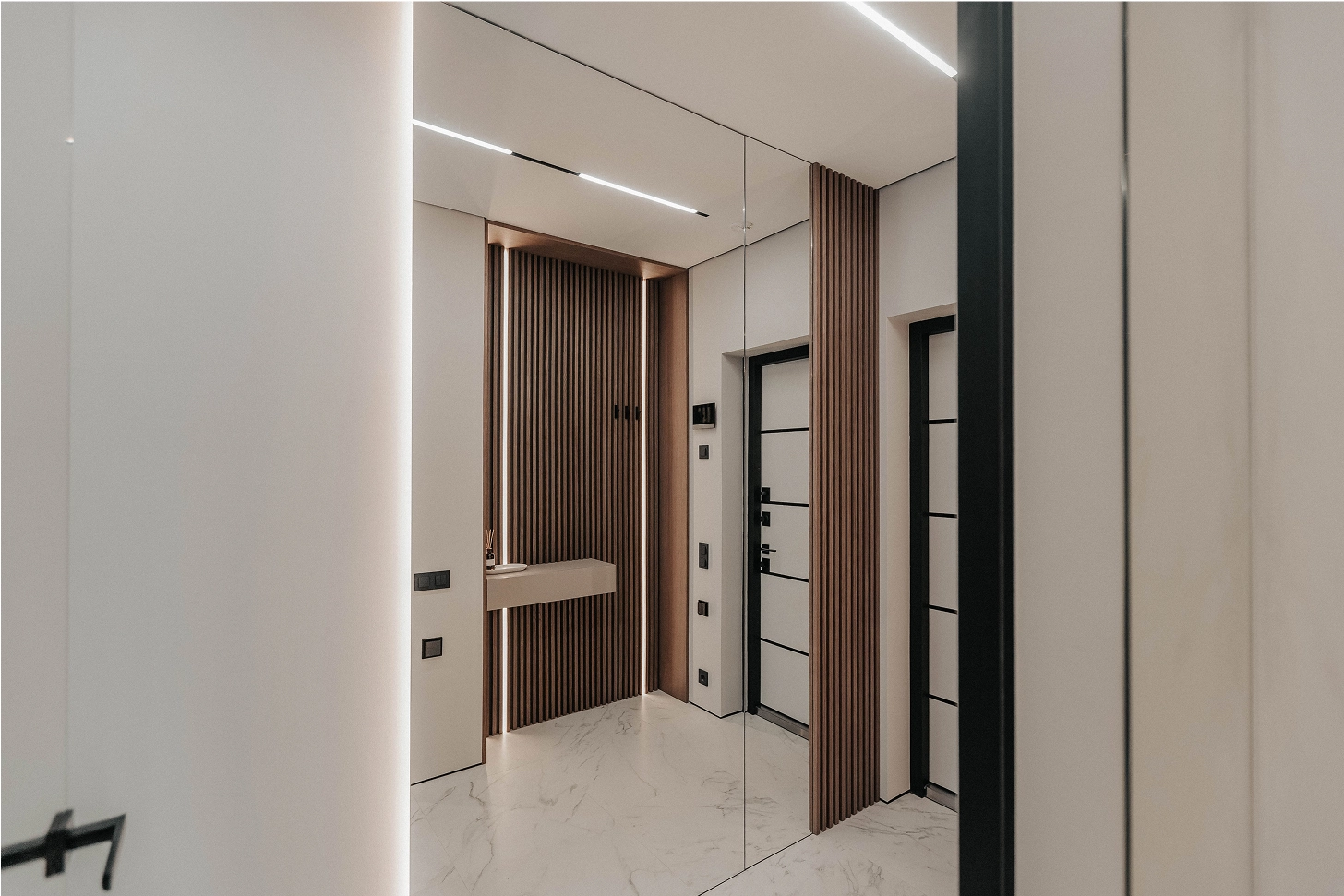
Creative Mirror Applications:
In landed house interior design, the subtle and artful use of mirrors can also enhance spatial depth, adding layers of visual interest and sophistication without ever making the look feel ostentatious or overwhelming.
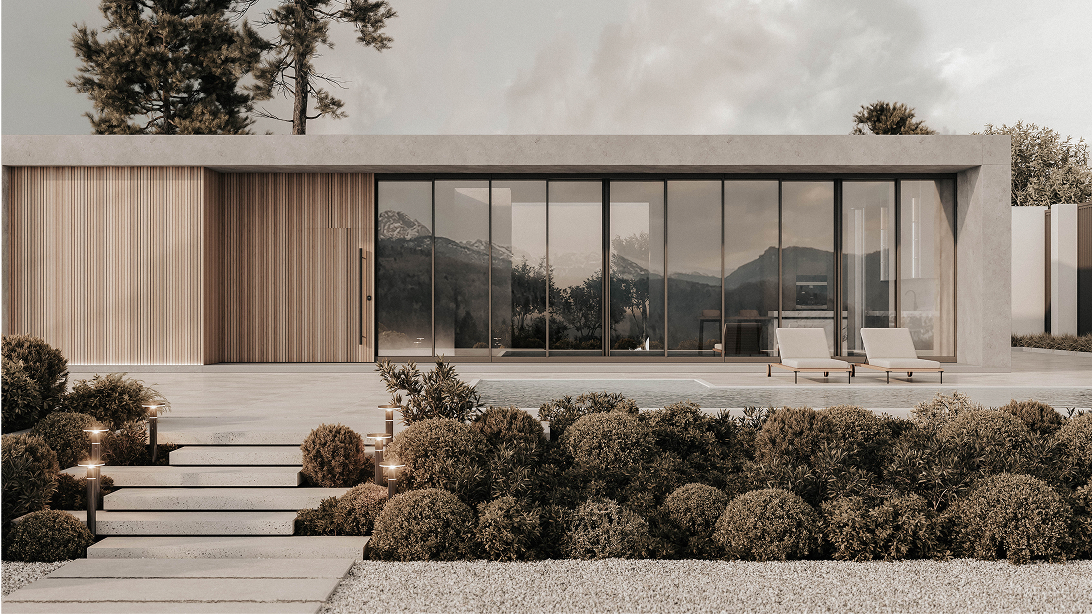
While lush greenery and robust fencing offer essential privacy and beauty in landed properties, they can also inadvertently become significant blockers of precious sunlight. During your landed house renovation Singapore project, it's crucial to adopt a holistic approach that seamlessly coordinates your landscape design with your interior lighting plan.
Strategies for Light-Conscious Landscaping:
Working with a team experienced in landed property interior design Singapore homeowners trust ensures that your outdoor and indoor spaces are not only aesthetically cohesive but also functionally work in perfect harmony, maximising light and airflow.

If you’re already investing in a significant landed interior design project, it's the opportune moment to integrate smart home systems that further optimise and control the flow of natural light. These technological enhancements not only elevate your lifestyle but also contribute significantly to energy efficiency across your entire landed property renovation.
These intelligent upgrades offer unparalleled convenience and contribute to a truly modern, luxurious, and energy-efficient living environment within your landed home.
Creating a light-filled, beautifully balanced, and high-performing home, especially within the unique context of a large landed property in Singapore, requires far more than simply adding more windows. It necessitates a deep, integrated understanding of architectural structure, the nuanced properties of various materials, the intricate dynamics of natural light, and the specific needs of your family's lifestyle. A skilled interior designer, particularly one experienced in landed house design Singapore, understands precisely how to blend complex practical renovation work with exquisite, refined aesthetics.
Our dedicated team has a distinguished track record of helping many discerning homeowners achieve breathtakingly lit interiors that feel inherently open, profoundly serene, and wonderfully inviting—all without compromising on essential privacy or critical functionality. We meticulously plan every detail, ensuring your landed house interior design not only meets your aspirations but fundamentally transforms your daily living experience.
Ready to illuminate your magnificent landed property and transform it into a beacon of natural light and sophisticated living?
Contact us today for a free consultation to discuss your dream space!
Explore our extensive portfolio of landed property projects to inspire your next renovation.
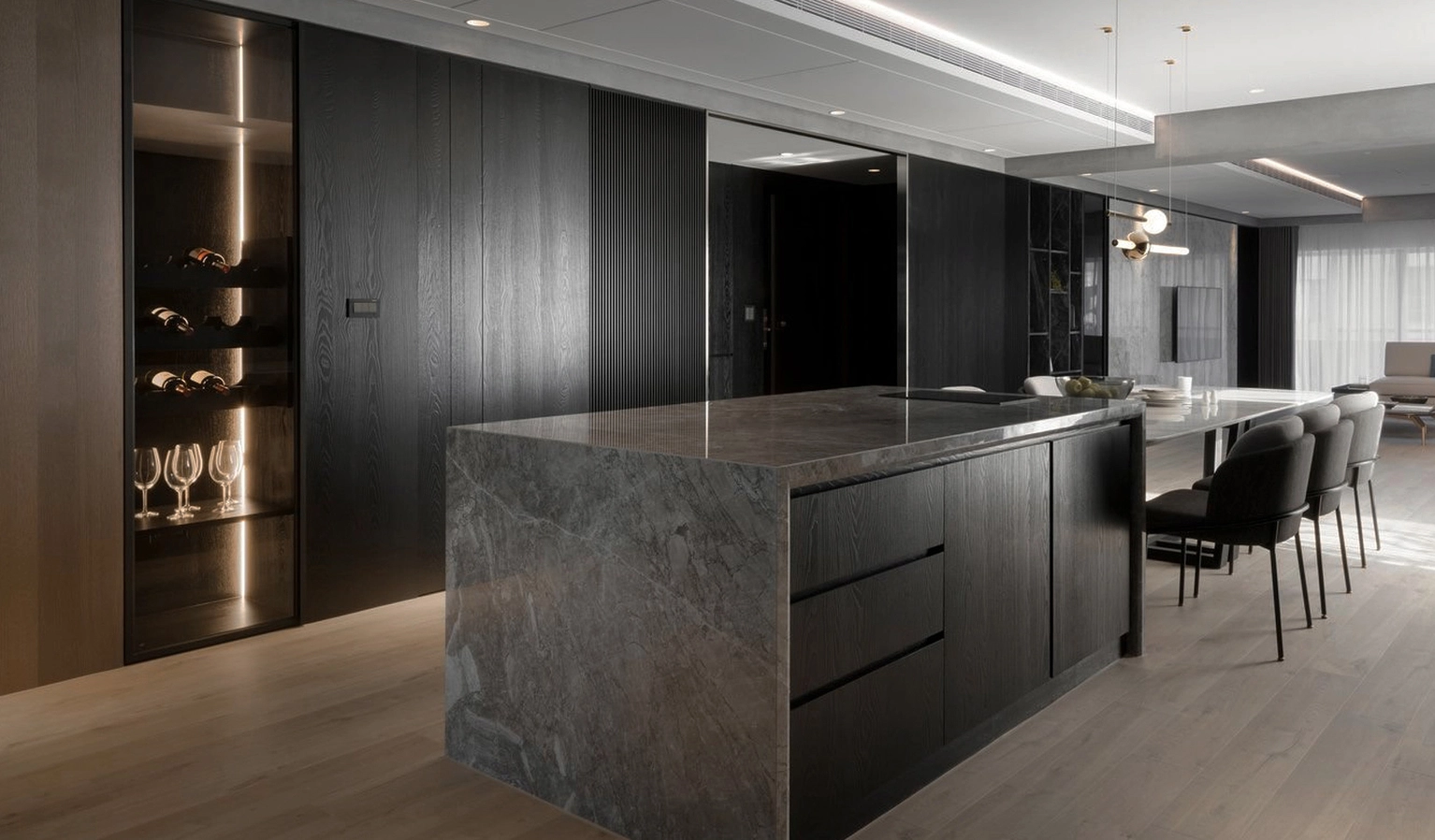
Singapore's luxury residential landscape is evolving rapidly, and nowhere is this more evident than in the integration of smart home technology into large houses and landed properties. What once required extensive rewiring and disruptive installation can now be seamlessly woven into renovation projects, creating homes that are not just more convenient, but fundamentally more intelligent.
For homeowners with substantial properties—whether you're in a Good Class Bungalow in Bukit Timah, a heritage shophouse in Tanjong Pagar, or a modern detached house in Sentosa Cove—smart home integration during renovation presents unprecedented opportunities to enhance comfort, security, and efficiency while future-proofing your investment.
The key is understanding that smart home technology for large houses isn't just about having more devices—it's about creating integrated systems that work harmoniously across expansive spaces, multiple levels, and diverse living zones.
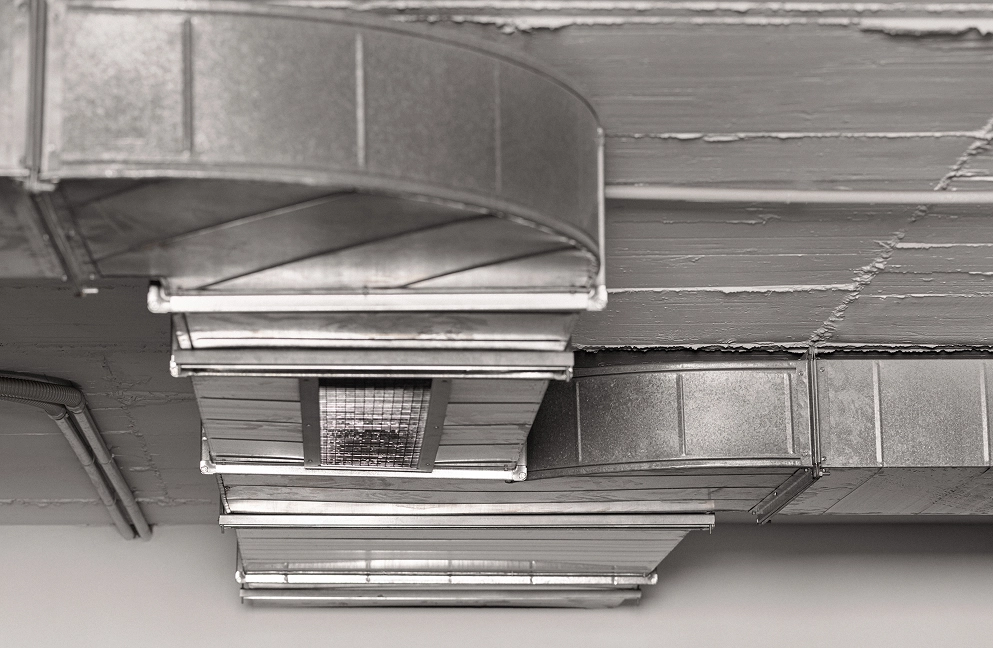
Singapore's tropical climate presents unique challenges for large houses, where maintaining consistent comfort across multiple floors and zones can be both complex and costly. Smart climate control systems transform this challenge into an opportunity for both comfort and efficiency.
Zoned HVAC systems with smart thermostats allow different areas of your house to be controlled independently. Your ground floor entertaining areas can be kept cool for guests while upper floor bedrooms remain at sleeping temperatures. Smart sensors detect occupancy, adjusting temperature only where needed—crucial for properties where you might only be using a fraction of the space at any given time.
Modern systems learn your patterns and preferences, pre-cooling spaces before you arrive home and adjusting for Singapore's sudden weather changes. Some advanced setups even integrate with local weather data, anticipating afternoon thunderstorms and adjusting accordingly.
For heritage properties with architectural constraints, ductless smart systems can provide climate control without compromising period features or requiring extensive structural modifications.
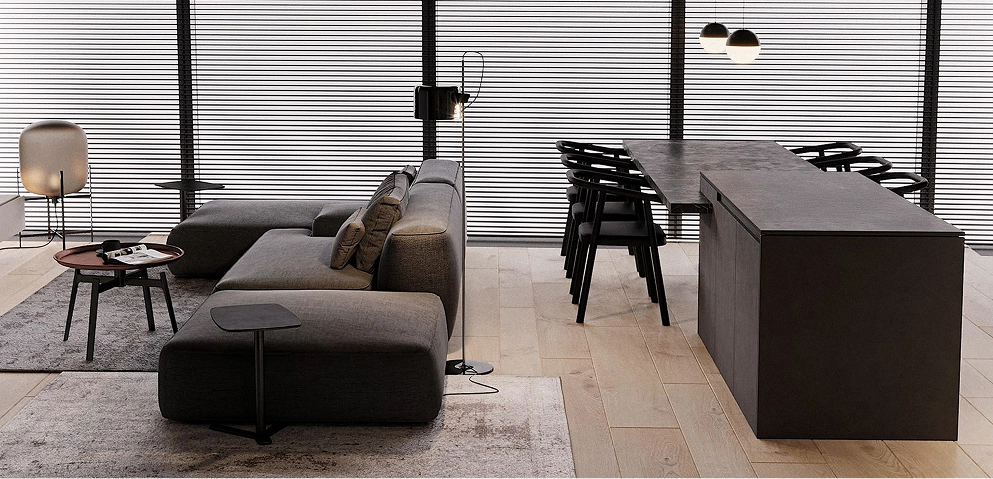
Singapore's unique position near the equator means dramatic shifts between intense daylight and quick transitions to darkness. Smart lighting systems in large houses can respond to these conditions while creating ambiance appropriate for different times and activities.
Circadian lighting systems automatically adjust color temperature throughout the day—bright, energizing light during intense midday sun, warm ambient lighting for evening entertaining. In large properties, this means different zones can have lighting appropriate for their use and orientation.
Smart window treatments integrate with lighting systems, automatically adjusting for Singapore's intense afternoon sun while maintaining privacy in densely built neighborhoods. Motorized blinds and smart glass can reduce solar heat gain during peak hours while maximizing natural light when beneficial.
For outdoor entertaining areas—crucial in Singapore's indoor-outdoor lifestyle—smart lighting can create different moods for poolside cocktails, garden dinners, or quiet morning coffee, all controllable from your phone or through voice commands.
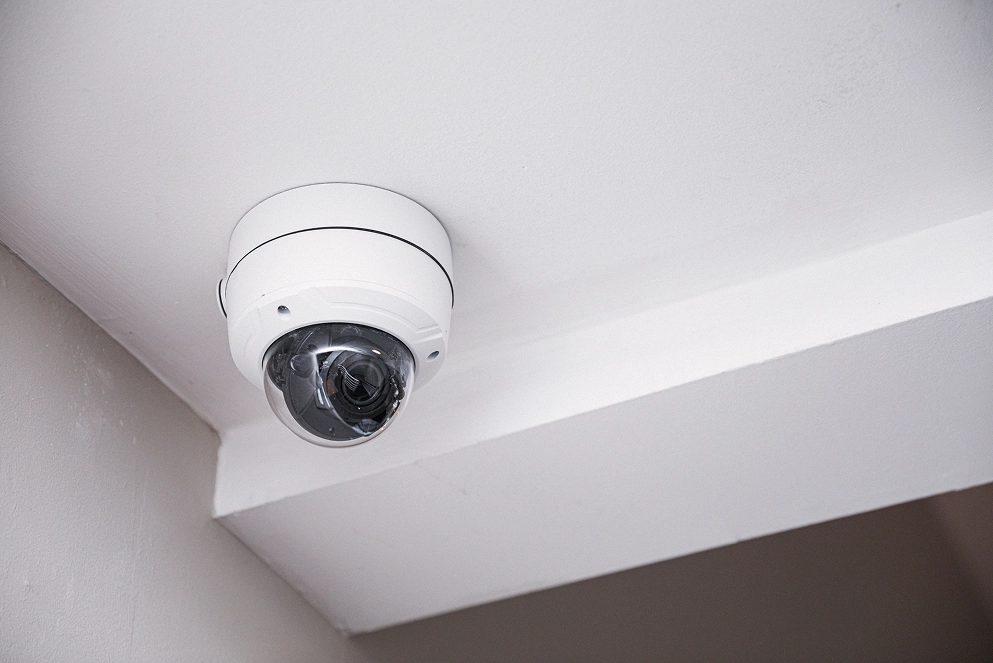
Large houses in Singapore face unique security considerations, from multiple entry points to extensive grounds that require comprehensive monitoring. Smart security systems can provide peace of mind while maintaining the elegant aesthetics that luxury properties demand.
Integrated camera systems with facial recognition can distinguish between family members, staff, and visitors, sending appropriate notifications and granting access accordingly. Smart doorbells at multiple entrances—main gate, front door, service entrance—can be monitored from anywhere in the house or while traveling.
Motion sensors throughout the property can detect unusual activity while learning normal movement patterns to reduce false alarms. Smart locks on multiple doors can be controlled centrally, with temporary codes for staff or guests that can be activated and deactivated remotely.
For properties with domestic helpers, smart systems can provide appropriate access controls while maintaining privacy and security for family areas.
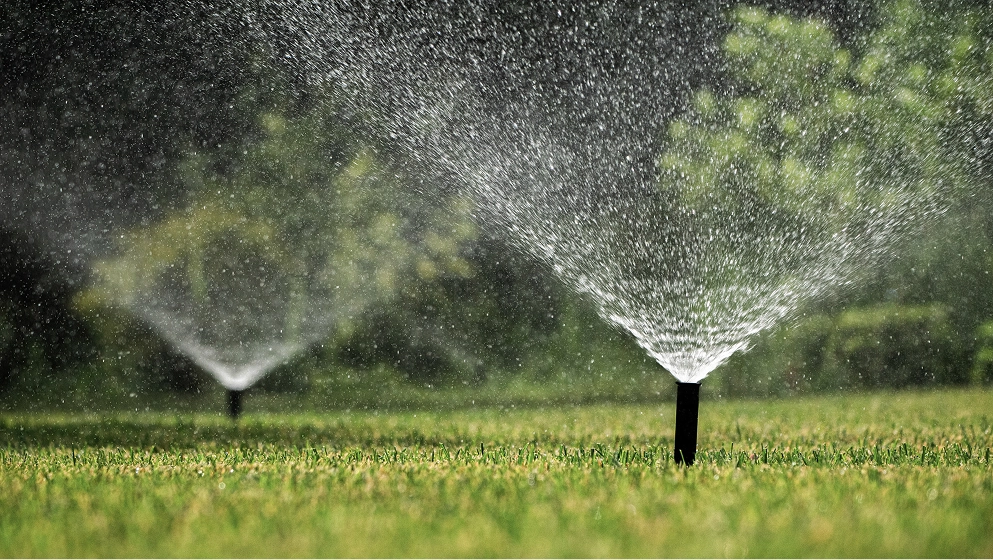
Singapore's tropical climate and frequent rainfall make smart water management particularly valuable for large properties. Smart irrigation systems can maintain extensive gardens while conserving water, adjusting for weather conditions and soil moisture levels.
For properties with pools—common in Singapore's luxury market—smart pool systems can maintain optimal chemical levels, temperature, and cleanliness while integrating with overall home automation. Pool lighting, water features, and surrounding entertainment areas can be controlled as part of comprehensive outdoor living systems.
Smart leak detection throughout the house can prevent water damage in Singapore's humid conditions, particularly important in properties with multiple levels and bathrooms.
Singapore's robust infrastructure and tech-forward culture create unique advantages for smart home integration during renovation. High-speed fiber connectivity throughout the island means reliable internet infrastructure for sophisticated systems.
Local electrical codes and building standards are well-suited to modern smart home requirements, and Singapore's pool of skilled technicians familiar with both traditional construction and modern technology makes integration smoother than in many other markets.
The planning phase becomes crucial—smart home infrastructure should be designed alongside architectural and interior elements, not added afterward. This is particularly important in Singapore's luxury market, where properties often feature complex layouts, multiple entertainment areas, and integration between indoor and outdoor spaces.
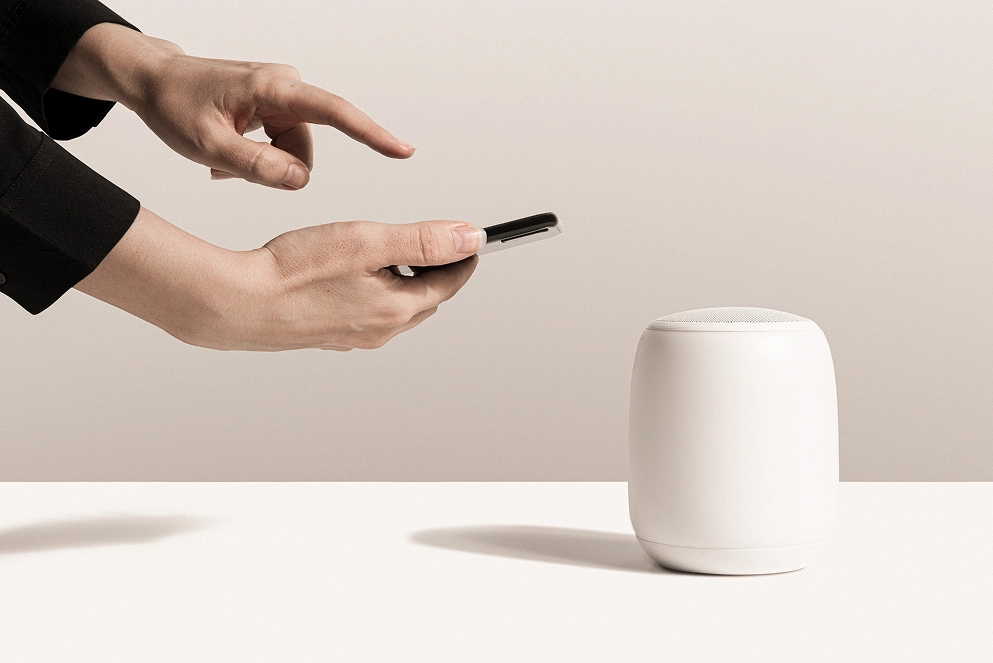
In multilingual Singapore households, smart home systems can be configured for different languages and family members. Voice assistants can respond to English, Mandarin, or other languages as needed, making technology accessible to all household members and staff.
Multi-generational living, common in Singapore's luxury market, benefits from intuitive controls that work for family members of all ages and tech comfort levels. Simple voice commands or tablet interfaces can control everything from lighting to air conditioning without requiring smartphone apps.
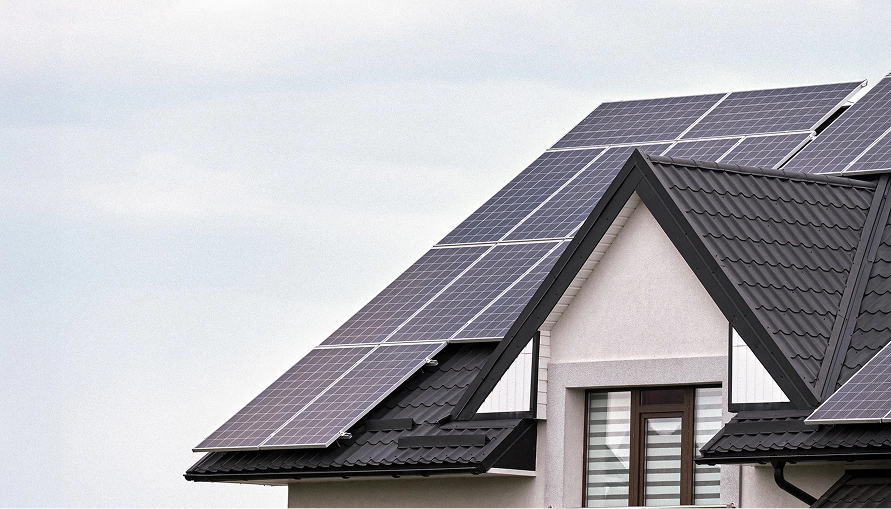
Singapore's focus on environmental sustainability makes smart home energy management particularly relevant. Smart systems can significantly reduce energy consumption in large houses through intelligent control of lighting, climate, and appliances.
Solar integration—increasingly popular in Singapore's landed property market—can be managed through smart systems that optimize solar generation, battery storage, and grid integration. Smart appliances can run during optimal energy cost periods, taking advantage of Singapore's time-of-use electricity pricing.
Real-time energy monitoring helps homeowners understand and optimize their consumption patterns, particularly valuable for large properties where energy usage can be substantial.
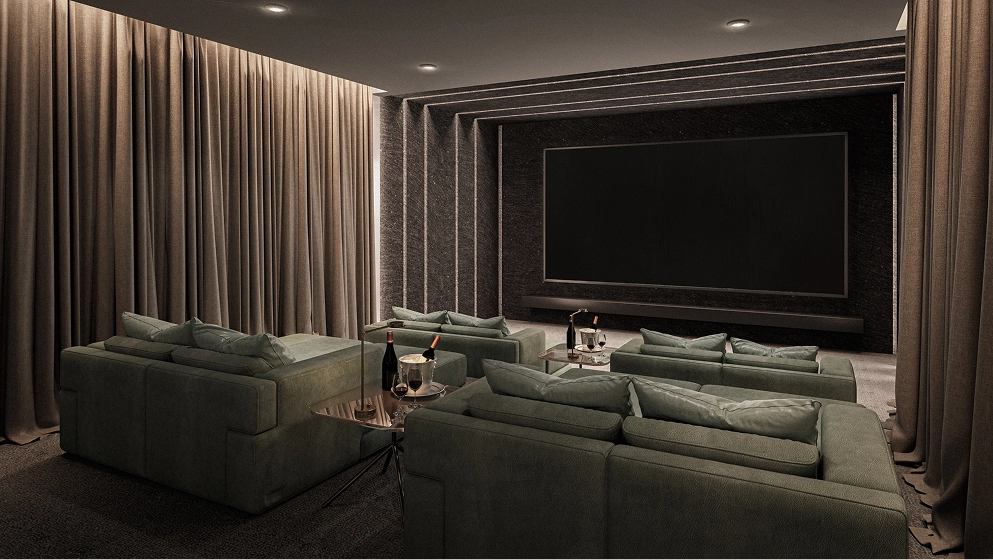
Singapore's culture of entertaining at home benefits enormously from integrated smart home systems. Whole-house audio systems can create different musical environments for different areas—jazz in the study, classical in the dining room, contemporary music by the pool.
Smart home theaters can automatically adjust lighting, temperature, and audio settings for optimal viewing experiences. For properties with wine cellars—popular in Singapore's luxury market—smart climate control maintains optimal storage conditions while integration with home systems provides security and monitoring.
Singapore's property market values forward-thinking amenities, and smart home integration significantly enhances property value while ensuring your home remains current as technology evolves.
Properly designed smart home infrastructure can be updated and expanded without major renovation, protecting your investment and allowing for future enhancements. This is particularly valuable in Singapore's competitive luxury property market.
The key is choosing systems that are scalable and based on open standards rather than proprietary technologies that might become obsolete.
The most successful smart home integrations happen during renovation when infrastructure can be properly planned and installed without compromising finished surfaces or architectural features. This is particularly important in Singapore's luxury market, where aesthetics and functionality must work together seamlessly.
Working with professionals who understand both Singapore's unique climate and lifestyle requirements and the technical demands of smart home systems ensures integration that enhances rather than complicates daily life.
Smart home technology should feel invisible and intuitive, enhancing your experience of your beautiful home rather than drawing attention to itself. When done properly, it creates homes that are not just more comfortable and efficient, but truly more livable.

Having a spacious office in Singapore is a rare advantage—but if it’s not planned properly, a large open space can quickly become overwhelming, noisy, and underutilised. The challenge? Creating defined zones for focused work, meetings, and collaboration without making the space feel closed-off or cluttered.
With the right office renovation approach, you can strike the perfect balance between openness and function. Whether you're starting a commercial office renovation or simply updating your layout, these smart design strategies can help you get the most out of your space while keeping that airy, modern feel.
Large offices can feel disorganised without a clear structure. Without visual or spatial cues, employees may struggle to find focus areas, collaboration spots, or quiet corners.
An experienced office renovation expert knows that zoning is not about building more walls—it’s about using design to guide how people interact with the space. Smart zoning leads to:
Let’s explore how to achieve this with thoughtful design.

Walls can break up space, but they also block light and flow. To maintain an open layout, use subtle visual cues like:
These non-intrusive dividers help employees intuitively understand the purpose of each area without physically closing off the space.
Glass partitions are a popular feature in many Singapore office renovations because they preserve openness while creating usable, quiet spaces. Frosted panels can offer privacy for meeting rooms or management offices while still allowing light to pass through.
Other smart options include:
If you're working with a professional office interior design company, they’ll help you balance privacy and transparency for each zone.
Not every zone needs a single, fixed purpose. With the right furniture and layout, you can create flexible spaces that adapt to changing needs:
Office interior renovation isn’t just about aesthetics—it’s about designing with adaptability in mind.

Even in large offices, quiet zones are essential for deep work. Carve out corners or use acoustic booths for solo focus work, phone calls, or one-on-one meetings.
Work with an office renovation company that understands acoustics—because visual openness shouldn't come at the cost of noise control.
Don’t forget the in-between spaces. Walkways, entry points, and connections between zones should be wide, intuitive, and unobstructed. This improves flow and avoids traffic bottlenecks, especially during busy periods.
An experienced office renovation company Singapore businesses rely on will design layouts that naturally guide movement while keeping zones visually distinct.
Lighting has a powerful effect on how we experience a space. Brighter, task-focused lighting works well in work zones, while warmer, softer lighting can mark out informal areas like lounges or pantry spaces.
Layered lighting helps separate zones without building walls—another great tool for preserving the open feel.
If you’re planning a commercial office renovation or simply refreshing your space, the right design decisions can turn a large open floor into a high-performing, visually seamless environment.
We specialise in office space renovation and understand the balance between functionality and aesthetics. Whether you need to separate departments, create meeting zones, or improve focus areas, our team provides tailored office interior design service Singapore companies trust.
Contact us today for a free consultation to discuss your dream space!
Explore our extensive portfolio of office projects to inspire your next renovation.
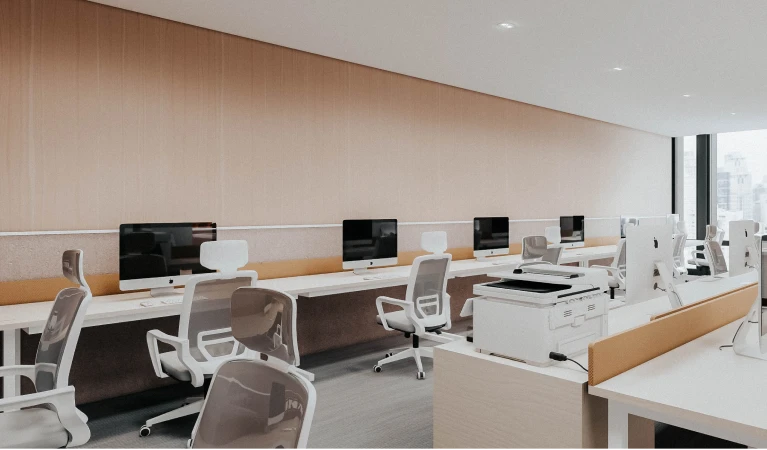
In a fast-paced business environment like Singapore, a well-designed office can do more than just look good—it can enhance productivity, support employee well-being, and create a professional impression for clients and partners. When space is thoughtfully planned, it gives employees room to focus, collaborate, and move around with ease.
Modern workplace design has evolved beyond the traditional desk-and-meeting-room formula. Today's most productive offices recognize that employees have diverse needs—from quiet focus time to private phone calls, from spiritual wellness to family responsibilities. Whether you're planning a new office renovation or upgrading your current setup, understanding how to use space effectively while accommodating these varied needs is key to creating a truly functional workplace.
It's easy to overlook how layout and design affect everyday work life. Cluttered workspaces, limited breakout areas, and inefficient layouts often lead to frustration and reduced performance. But more importantly, offices that fail to address employees' holistic needs—from focused work to personal wellness—create stress and dissatisfaction that directly impacts productivity.
On the other hand, a spacious and well-organized office that thoughtfully accommodates different work styles and personal needs can significantly boost productivity, morale, and overall business performance.
If you're working with an office renovation expert or planning a commercial office renovation, here are the essential design strategies to help you get the most out of your space while creating an inclusive, supportive environment.
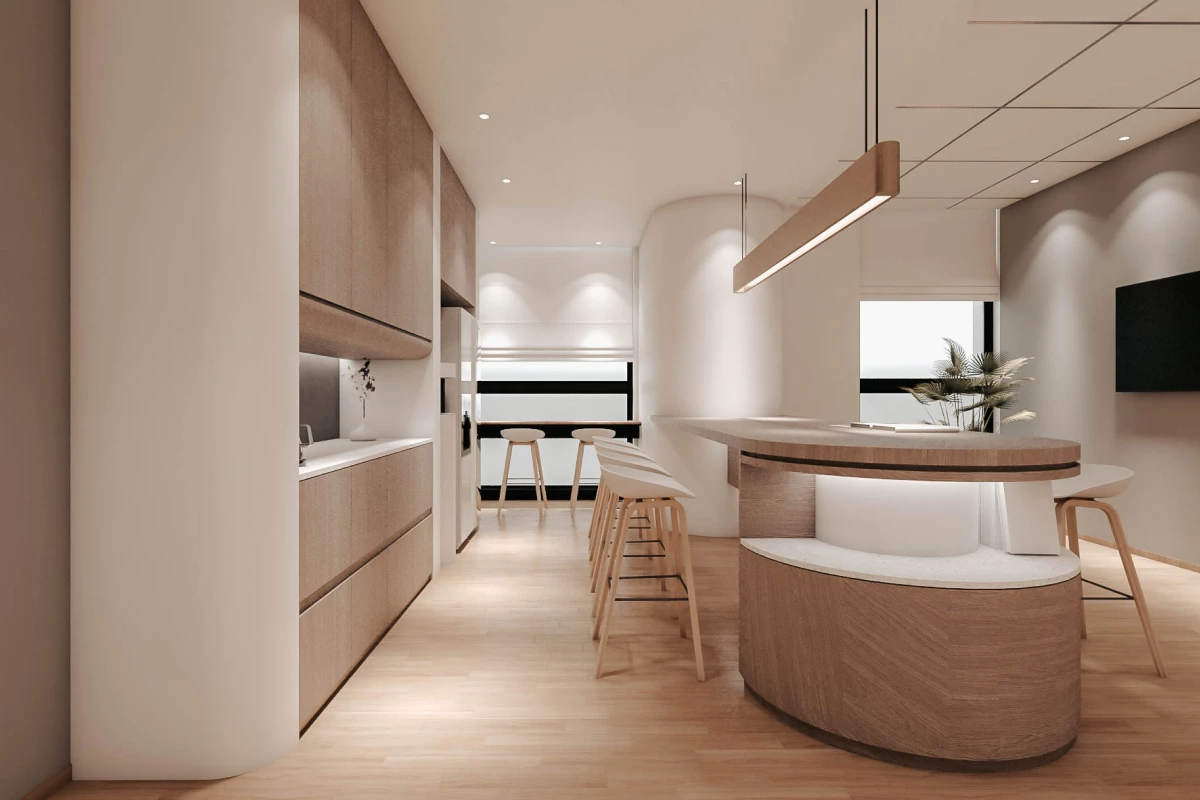
The foundation of a productive workspace lies in its layout. A good office interior design company will evaluate how your teams operate and create zones that support different tasks—whether it's focused work, collaboration, meetings, or personal needs.
Open-plan areas work well for collaborative teams, but they should be balanced with quiet spaces or soundproof pods for focused work.
Defined zones like hot-desking areas, lounges, and meeting rooms prevent overcrowding and support different work styles.
Specialized wellness spaces such as nursing rooms, prayer rooms, and quiet meditation areas demonstrate care for employee well-being and can significantly improve job satisfaction.
If you're considering a major renovation office project, ensure your office space renovation plan includes flexibility for future growth and evolving employee needs.
Today's most progressive offices are incorporating specialized rooms that address diverse employee needs and company operations. Consider which of these spaces would benefit your team:
The key is selecting spaces that align with your company culture and employee demographics while ensuring each room serves a genuine need rather than just following trends.
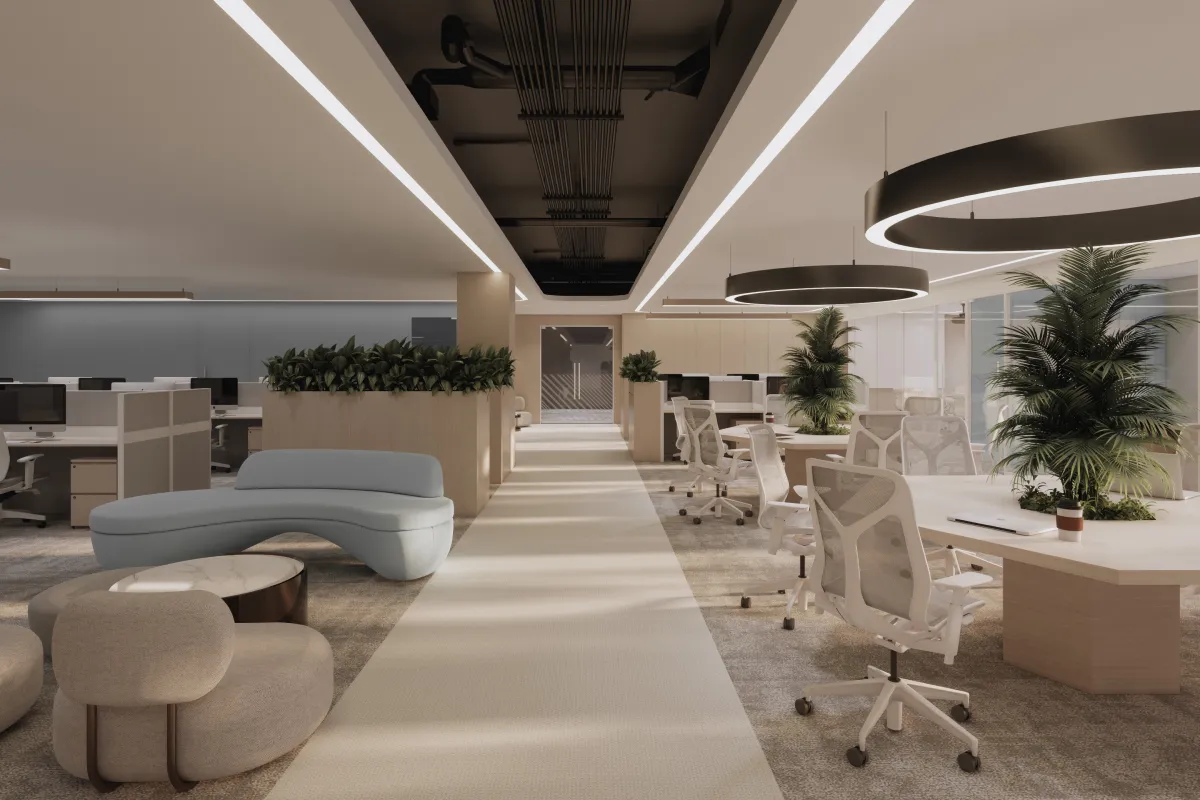
A common issue in Singapore's commercial buildings is the lack of natural light. A smart office interior renovation should find ways to open up the space while ensuring privacy for specialized rooms:
Use glass partitions instead of solid walls to let light through without compromising privacy—particularly effective for phone booths and quiet work areas.
Choose a light, neutral color palette to make rooms feel brighter and more expansive.
Position communal areas near windows while placing private spaces like server rooms or wellness areas in more secluded locations as needed.
When your workspace feels open and bright, your team is more likely to stay focused and energized throughout the day.
Nothing makes a space feel more cramped than clutter. Built-in cabinets, under-desk storage, and cleverly concealed shelving systems help reduce visual noise while maintaining accessibility.
When planning specialized spaces, consider the storage requirements for each room type—from equipment storage for tech rooms to personal item security for wellness spaces. The goal is ensuring every space, regardless of function, contributes to an organized, efficient workplace.
An experienced office renovation company singapore teams trust will tailor storage solutions to your workflow—so everything has its place without wasting precious floor area.
Furniture plays a key role in how spacious your office feels. Oversized desks and chunky chairs may look impressive, but they often reduce walkable space and make an office feel tight.
Opt for ergonomic furniture that supports comfort and mobility across all spaces.
Use modular pieces that can be reconfigured depending on your team's needs—particularly useful for multi-purpose quiet rooms.
Allow for clear walkways and circulation paths to avoid bottlenecks, especially important when incorporating multiple specialized spaces.
Choose appropriate furniture scales for different room types—each specialized space has unique requirements that affect spatial flow and functionality.
An office interior design service singapore providers offer will help you select the right furniture to balance style and function across all your specialized spaces.
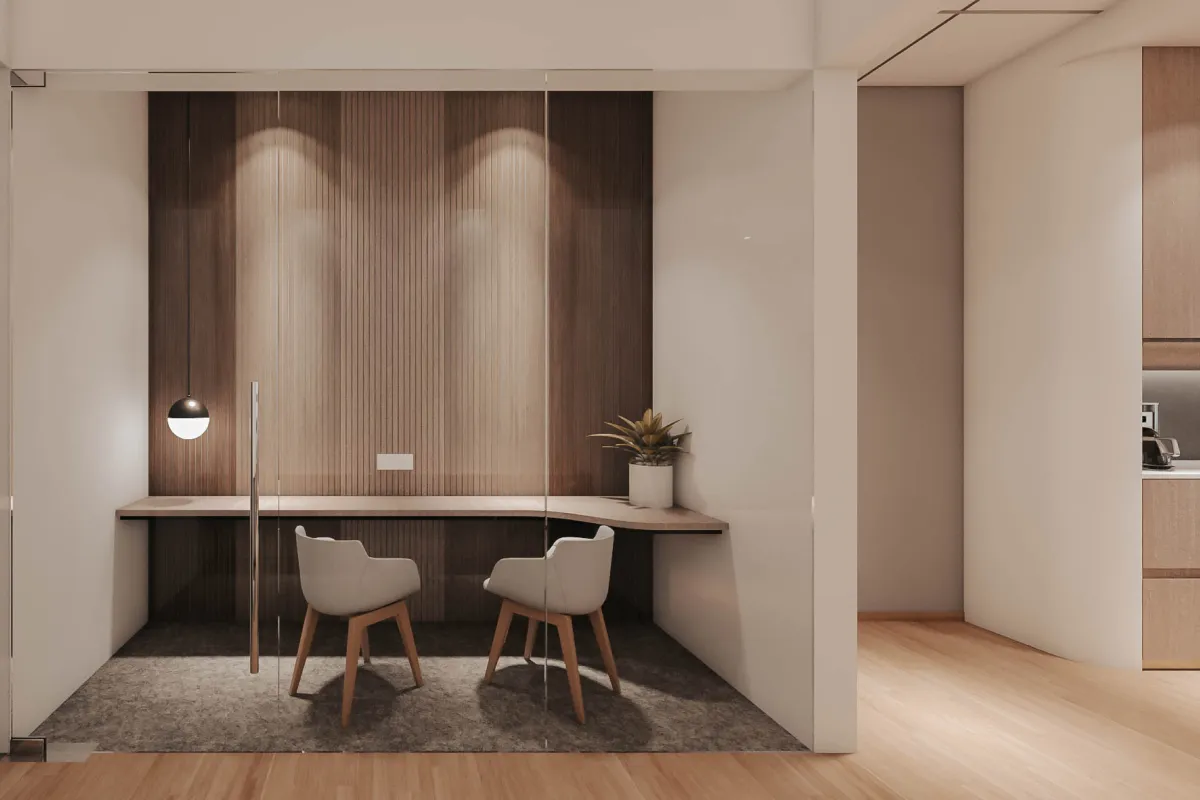
Breakout areas are often underestimated, especially in dense office layouts. But they're essential for promoting well-being and giving employees a mental break from their tasks.
Whether it's a small café corner, a quiet lounge, or a standing meeting zone, these informal areas can help recharge your team and foster creativity. Consider how these spaces can complement your specialized rooms to create a holistic workplace experience.
Your office should reflect your brand's personality and values while creating spaces that feel welcoming to all employees. From color schemes to artwork and signage, every element contributes to the overall impression.
For specialized spaces, maintain your brand aesthetic while ensuring functionality—whether that's acoustic requirements for recording studios, climate control for server rooms, or calming atmospheres for wellness spaces.
A professional office interior decorator can subtly integrate your visual identity into walls, furniture, and fixtures while ensuring all spaces serve their intended purpose effectively.
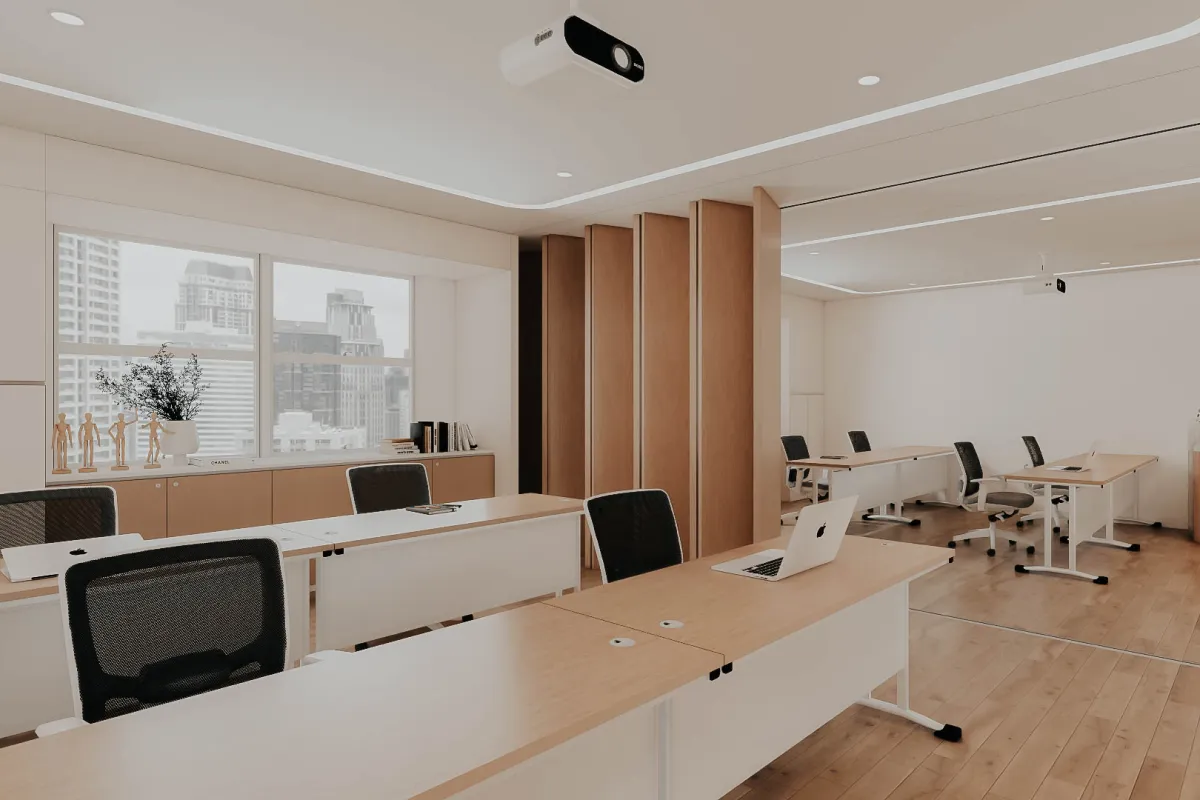
As your company grows and evolves, so will your employees' needs. Design specialized spaces that can adapt:
Designing a spacious, productive office that serves all employees isn't about having more square footage—it's about using what you have intelligently while creating an inclusive environment that supports diverse needs.
With the right office interior designer Singapore professionals on your side, you can create a space that looks great, works efficiently, and makes every employee feel valued and supported.
We specialize in commercial office renovation and offer comprehensive office interior renovation services tailored to your company's size, needs, and goals. Whether you're updating a small space or planning a complete overhaul that includes specialized wellness areas, our team ensures every inch is put to good use.
Contact us today for a free consultation to discuss your dream space!
Explore our extensive portfolio of office projects to inspire your next renovation.
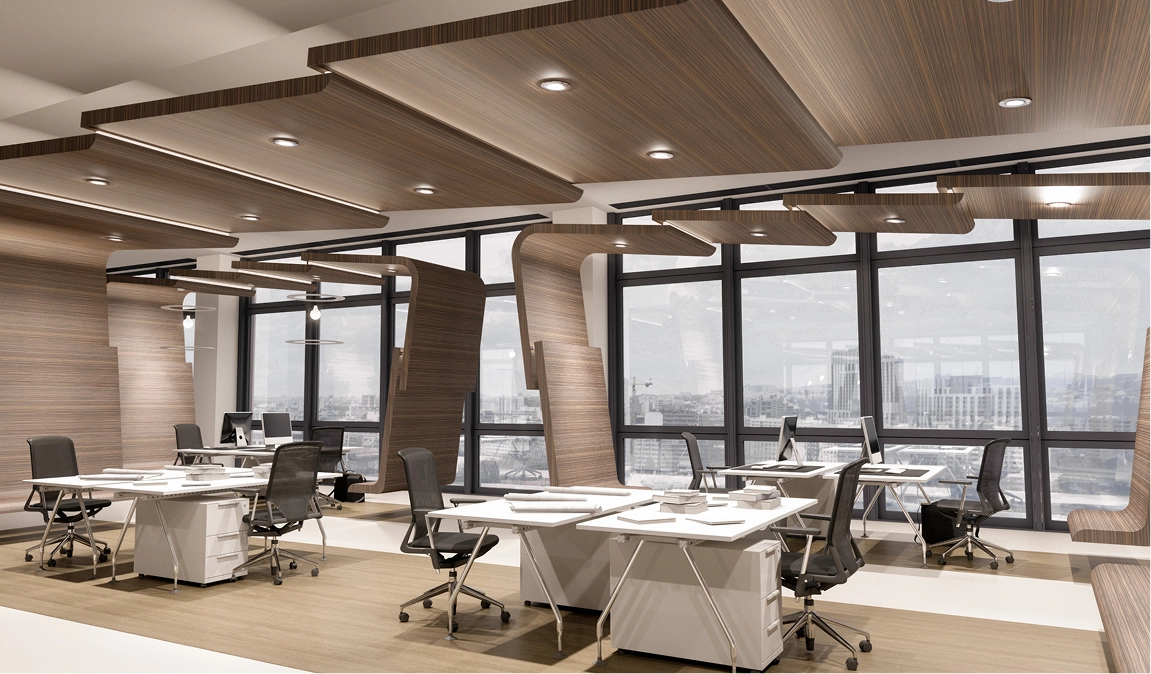
The moment you walk into a truly brand-aligned office, you feel it. There's an unmistakable energy that tells you exactly who this company is and what they stand for—without reading a single piece of marketing material. The space itself becomes the most powerful brand statement they could make.
Your office isn't just where work happens—it's where your brand comes to life. Every surface, every color choice, every piece of furniture is either reinforcing or expressing your brand identity. The companies that understand this create spaces that become genuine competitive advantages.
When your physical environment authentically reflects your brand, something remarkable happens: clients feel more confident, employees feel more connected, and your company's vision becomes tangible and believable.
Most companies think brand expression in offices means hanging their logo on the reception wall and maybe using their brand colors for accent pieces. But true brand identity runs much deeper than visual markers. It's about embodying the values, personality, and culture that drive your organization.
A truly branded office doesn't just display your identity—it makes people feel it. When someone walks into your space, they should immediately sense whether you're innovative or traditional, collaborative or focused, playful or serious, without reading a single word of marketing copy.
Brand identity in office design is about translating abstract concepts—your company's personality, values, and aspirations—into tangible, spatial experiences that reinforce your market position and cultural DNA.
Human beings are remarkably sophisticated at reading environmental cues. Within seconds of entering a space, we make unconscious judgments about the organization's credibility, values, and culture. These snap judgments influence everything from employee retention to client confidence to investor interest.
Consider two law firms: One has rich wood paneling, traditional furnishings, and classical artwork—it communicates stability, tradition, and gravitas. Another features sleek modern furniture, abundant natural light, and contemporary art—it suggests innovation, agility, and forward-thinking. Both can be highly successful because their spaces tell coherent, compelling stories that attract the right clients and talent.
The key is ensuring your space tells the story you intend—one that amplifies your actual brand positioning.
The most successful brand-aligned offices begin with a clear understanding of the company's core attributes. Are you approachable or exclusive? Innovative or reliable? Global or local? Collaborative or independent? Each of these characteristics has specific spatial opportunities.
Innovation and Creativity translate into flexible spaces, unexpected materials, bold color choices, and areas that encourage experimentation. Think modular furniture, writable surfaces, varied lighting, and spaces that can be reconfigured for different activities.
Trust and Reliability express themselves through quality materials, clean lines, consistent finishes, and spaces that feel permanent and well-considered. This creates environments that feel stable and confident.
Collaboration and Community flourish in spaces with open sight lines, varied seating arrangements, shared areas that encourage interaction, and informal gathering spaces that feel welcoming rather than corporate.
Sophistication and Excellence shine through attention to detail, premium materials, refined proportions, and spaces that feel curated rather than decorated. Every element should feel intentional and of the highest quality.
Color is perhaps the most powerful tool for brand expression because it operates on both conscious and subconscious levels. But effective brand color use goes far beyond painting walls your logo colors.
The most sophisticated approach treats your brand palette as a starting point for developing a richer environmental story. If your brand uses navy and orange, how do those colors express themselves in different intensities and contexts throughout your space? Perhaps navy appears as a statement wall in reception, as upholstery in meeting rooms, and as subtle accents in workstations.
Consider the emotional associations of your colors. Navy suggests trustworthiness and professionalism. Orange conveys energy and creativity. How do you want people to feel in different areas of your office, and how can color support those emotional goals?
Materials speak volumes about company values and positioning. A sustainable design consultancy should showcase reclaimed wood, recycled materials, and living plants. A luxury brand requires premium finishes, refined textures, and materials that age gracefully. A tech startup might embrace industrial elements, cutting-edge materials, and surfaces that reflect their innovative spirit.
The key is authenticity—materials should feel natural to your brand, creating environments that feel genuine rather than forced. When materials align with brand values, they create spaces that feel both impressive and believable.
How your office functions is as important as how it looks. A company that values collaboration needs spaces that facilitate interaction. An organization focused on deep thinking requires areas that support concentration. A client-facing business needs impressive presentation capabilities.
Your spatial layout should reinforce your operational values. Open offices communicate transparency and collaboration, making them ideal for companies prioritizing teamwork. Private offices suggest confidentiality and focused work, perfect for organizations requiring concentrated individual effort.
%201.webp)
The most successful branded offices maintain strong identity while allowing for evolution. This means creating systems rather than static solutions—modular furniture that can be reconfigured, display areas that can showcase changing work, color schemes that can accommodate new elements without losing coherence.
Brand consistency doesn't mean rigidity. It means establishing a clear voice that can express different aspects of your identity as your company grows and changes.
Your office doesn't just communicate with visitors—it shapes your employees' daily experience and reinforces their connection to company values. An office that authentically reflects your brand helps employees feel proud of where they work and confident in explaining your company's mission to others.
When spatial design aligns with brand values, it becomes a powerful recruitment and retention tool. Top talent wants to work for organizations with clear identity and authentic culture, and your office is often their first substantial interaction with both.
The most effective brand integration is subtle and systematic. Rather than relying on obvious brand displays, it's about creating an environment where brand values are expressed through every design decision, from the reception experience to the conference room setup to the way natural light is managed throughout the day.
True brand integration feels natural and unforced. It's about creating spaces where your company's personality shines through authentic choices that support both your culture and your work.
Creating an office that truly reflects brand identity requires thoughtful planning and authentic decision-making. It means making choices that reinforce your unique position in the market and support the work you're actually doing.
The return on this investment is substantial: increased employee engagement, stronger client confidence, clearer market differentiation, and spaces that actually support your operational goals.
In a marketplace where products and services can be easily copied, authentic brand expression becomes a significant competitive advantage. Your office is one of the few brand touchpoints that competitors can't replicate because it's uniquely tied to your culture, values, and way of working.
When your space authentically reflects your brand identity, it becomes a powerful business asset that works continuously to reinforce your market position, attract the right people, and support your operational goals.
The companies that thrive understand that their office is either helping or expressing their brand every single day. The question is: what story is your space telling?

Your landed home is more than just a structure; it's a statement. And the first impression it makes is often defined by its exterior. Outdoor renovations are not just about aesthetics; they are strategic investments that can impact your property's overall curb appeal and value. Let’s discover valuable design ideas and renovation tips to help you make a lasting first impression.
When planning an outdoor house renovation, focusing on specific areas can yield the most significant impact on curb appeal.
The garden is often the focus of any outdoor space's landscaping project, offering the most expansive canvas for transformation. Instead of generic plantings, consider a thematic approach. For instance, a contemporary tropical garden could feature lush, layered foliage with resilient palms, vibrant heliconias, and fragrant frangipani, providing year-round colour and privacy.
Integrate defined pathways made of large, irregular stepping stones or sleek, minimalist pavers edged with subtle borders to guide the eye and direct foot traffic. For an added touch of luxury and tranquillity, a small, reflective koi pond or a minimalist water wall can introduce a soothing auditory element and a dynamic visual focal point.
Often overlooked, the driveway and walkways are critical in shaping your home's initial approach. An exterior renovation here can significantly boost both functionality and style. Instead of plain concrete, consider permeable pavers that allow rainwater absorption or natural granite cobblestones for a timeless, elegant feel.
Define the edges of your driveway and walkways with subtle curbing or planted borders to create a polished look. Low-level lighting along pathways not only enhances safety but also creates a warm, inviting glow in the evenings.

Your front entrance is the gateway to your home and deserves special attention during any exterior renovations.
Consider replacing an ordinary door with a custom-designed, oversized timber pivot door for a dramatic, luxurious entry, or a sleek, minimalist door with smart lock integration for a modern touch. If you have a porch, consider upgrading its flooring.
Furnish it with comfortable, weather-resistant armchairs and a small side table, creating a welcoming spot for relaxation or conversation, complemented by carefully chosen decorative planters filled with vibrant, shade-loving plants.
Strategically placed outdoor lighting is crucial for both curb appeal and safety. Employ a layered lighting scheme: use subtle uplights to illuminate the textured façade of your home or highlight key trees in your landscape. Integrate pathway lighting at ankle height to guide visitors safely and add a soft, ambient glow.
For enhanced security without sacrificing aesthetics, discreet motion-sensor spotlights can be integrated into the design, providing peace of mind. Feature lighting around a sculpted water feature or a statement plant can create captivating evening focal points.
Undertaking outdoor renovations or an entire landed property renovation can be complex, requiring expertise in landscaping, construction, and design. Partnering with a reputable reno company in Singapore is recommended to ensure high-quality workmanship, adherence to timelines, and a result that truly exceeds your expectations.
Schedule a free design consultation with our design experts and discover how we can elevate your home's curb appeal into a masterpiece, or WhatsApp us now to begin your journey.

Office flooring is more than an aesthetic choice; it's a critical component that influences acoustics, employee comfort, safety, and the overall atmosphere of your commercial space. That’s why selecting the best flooring for office environments requires a careful balance of functionality, design, comfort, and budget. Let's delve into the key factors to help you decide on an optimal office flooring solution.
Before diving into specific office flooring options, consider these factors that will guide your decision-making process:

Exploring the most common type of office flooring may provide a clearer picture of what each material offers.
Carpet, particularly in modular tile form, is a popular choice for office flooring due to its acoustic properties. It effectively absorbs sound, reducing noise from foot traffic and conversations. Meanwhile, modern carpet tiles offer design versatility, allowing for custom designs, zoning, and easy replacement of damaged sections. While they require regular vacuuming, many modern carpets are stain-resistant and durable enough for commercial use.
LVT and LVP have become a go-to as some of the best flooring for office environments, largely due to their durability and design versatility. These multi-layered synthetic floorings can mimic the appearance of natural wood, stone, or even concrete, without the high cost or maintenance demands of their natural counterparts. Their robust wear layer makes them suitable for high-traffic areas, and their ease of installation allows for efficient office renovation projects.
For a contemporary and low-maintenance solution, polished concrete is an increasingly popular office flooring choice. It offers exceptional durability, capable of withstanding heavy foot traffic and equipment without showing wear. Once sealed, it is easy to clean and maintain, requiring little more than regular sweeping and occasional mopping. While it offers a sleek aesthetic, its hardness means acoustics and underfoot comfort need to be addressed through other design elements like rugs or acoustic panels.
Among the types of office flooring, rubber flooring is often considered for specific areas like breakout zones, gyms, or even quiet rooms where comfort and safety are paramount. Its elasticity provides excellent shock absorption, reducing fatigue for those standing for long periods. It's highly slip-resistant, offering good acoustic properties, and is extremely durable. Available in various colours and textures, it can also contribute to a modern, functional aesthetic.
Making the right choice among various office flooring options involves balancing all these factors. For instance, a tech start-up might prioritise a modern office flooring aesthetic like polished concrete or LVT, while a traditional law firm might lean towards a more classic carpet or wood look.
For complex projects or to ensure the best outcome for your commercial space, engaging professional interior design services can be helpful. An experienced retail store interior design firm can guide you through material selection, design coordination, and installation planning.
Schedule a free design consultation with our experts to explore the best flooring for your office environments and discover how we can transform your space, or WhatsApp us now to start your journey towards a more functional and inspiring workplace.

Interior design is more than just aesthetics—it directly influences how we feel and behave in a space. The choices we make in our homes or workspaces impact our mood, well-being, and even productivity. By understanding the psychology of interior design, we can create environments that enhance our emotions, cognition, and overall experience.
Color is one of the most powerful tools in shaping our emotional response to a space. Different hues evoke different feelings, often subconsciously influencing our energy levels and emotions.
Choosing a color scheme that aligns with the desired atmosphere of a space can significantly influence the overall ambiance and emotional experience.
Lighting plays a crucial role in shaping our emotional well-being. The right lighting enhances comfort, sets the tone, and even affects energy levels.
The way a space is arranged affects not only aesthetics but also movement, interaction, and overall comfort. A well-planned layout fosters harmony, while clutter or poor furniture placement can create stress and discomfort.
Humans have an innate connection to nature, and biophilic design incorporates natural elements to promote well-being, reduce stress, and increase productivity.
A space that reflects personal tastes, memories, and values fosters a sense of belonging and comfort.
Interior design goes beyond making a space look good—it’s about crafting environments that support emotional well-being and enhance daily life. Thoughtful choices in color, lighting, layout, and personal elements contribute to a space that feels comfortable, inspiring, and functional.
By integrating design principles that prioritize mood and psychology, you can transform your home or workspace into a sanctuary that promotes positivity, relaxation, and productivity.
This article is part of DreamR’s ongoing series on transformative design and living spaces.
Free design consultation
.png)
Get
in touch

Message sent!




